Growing Down
(2007 - 2008)
“The need to integrate, the anxiety of being different, and the sense of transplantation, all create a conflict between assimilation and vanishing. Sometimes it seems the children of the immigrants blend into their environment. They adapt their shape to the local template and the gap between them and those who belong is obscured. At other times their “otherness” makes them disappear, creating longing and absence from real space.”
Yair Barak


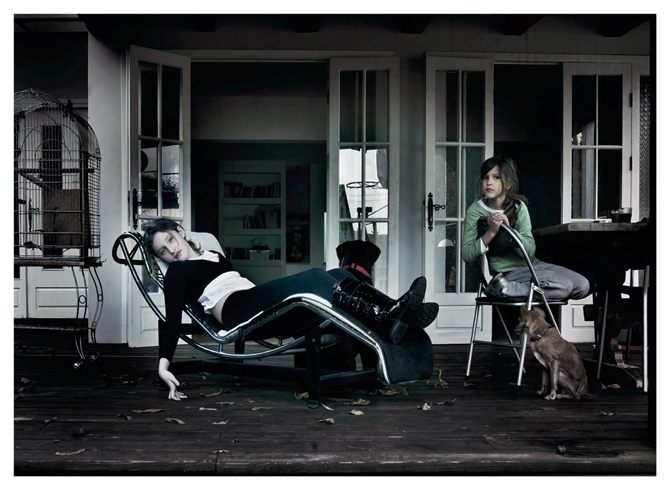


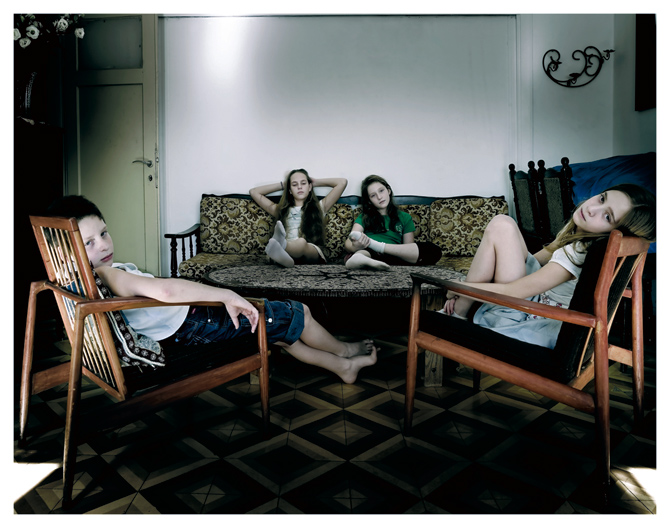
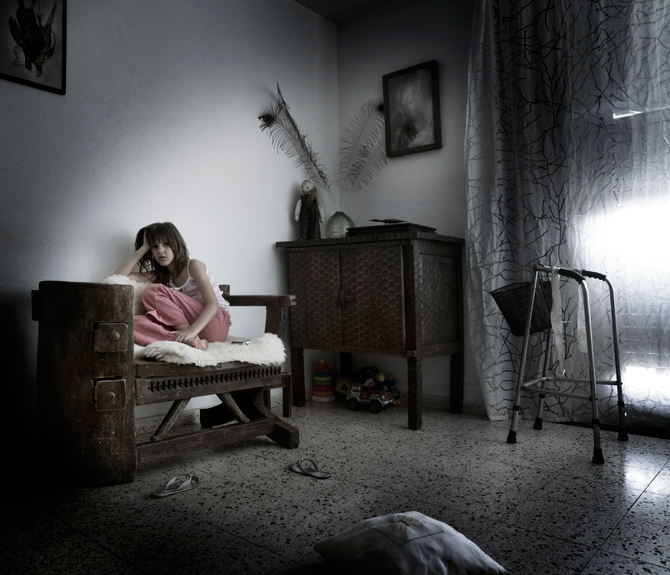


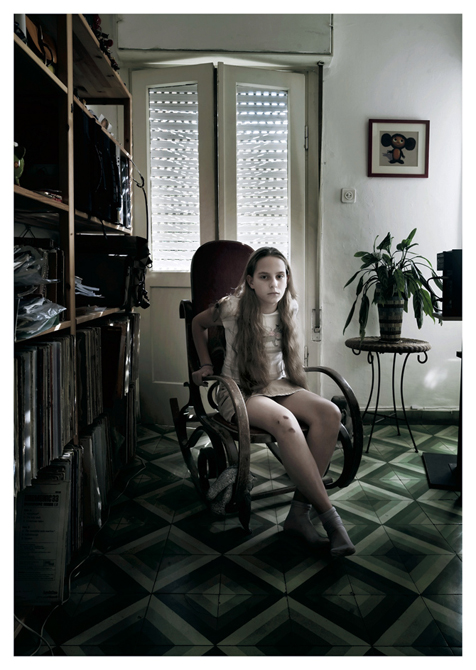
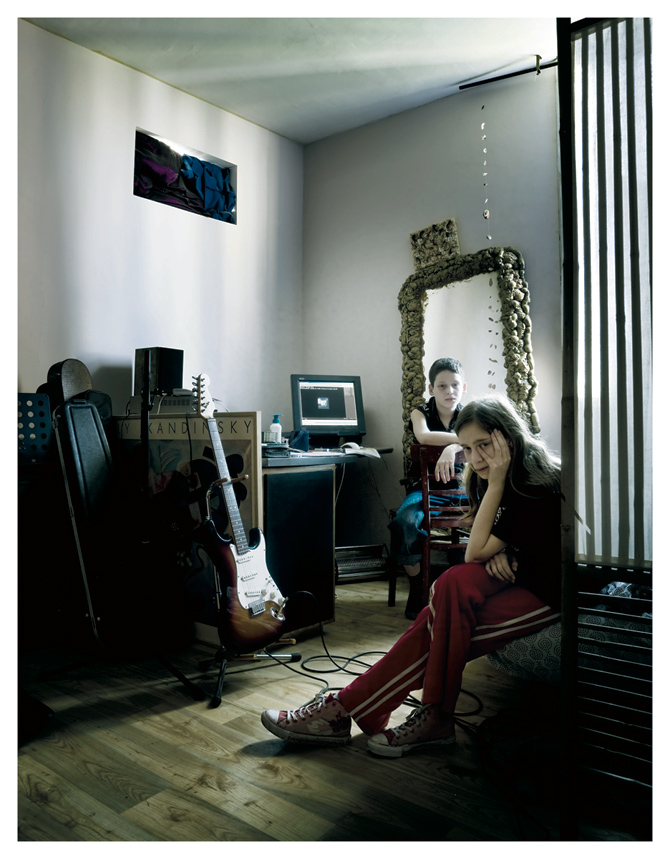
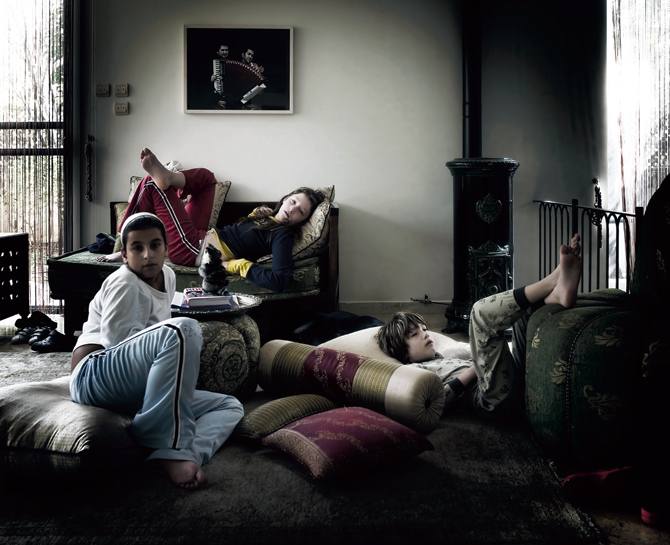

Growing Down
In one photograph from Growing Down, two girls sit on what appears to be a back porch. One of them is reclining, staring at the camera with a glazed look, both bewildered and hallucinating. Her skin is so fair she seems bloodless. Her posture gives in to the pull of gravity, and her long hand seems to be sucked into the space between the wooden beams, wishing to touch or to penetrate. The other girl belongs in a different reality: she sits in a childlike position, very familiar, looking absent-mindedly at the camera. Her skin is darker, earthier, alive. Two dogs sit between the girls, their backs to the camera, constituting a decorative element reminiscent of animal sculptures in European gardens.
The chromatic range of the photograph is tight, cold, barely saturated, melancholy. This photograph contains a complex set of signs and images characteristic of the works in this series.
The “present” in the pieces is also the “absent.” Childhood, with its familiar attributes, is absent, its place taken by a mature presence, devoid of childlike spontaneity; a conscious, considered visibility, achieved by careful planning and meticulous execution, made familiar by Baroque painters such as Caravaggio or Velasquez, who excelled in transporting reality into the realm of the sublime. The critical distancing and the sexual presence of the objects bring to mind a much later reference, that of Balthus’s paintings of young girls: disturbing, anxious, seductive, and enigmatic.
I continue to study the photographs and stop in front of two girls in a doorway. One, her body wide and solid, turns a conscious, playful gaze at the camera, adopting a pose borrowed from the world of consumer culture, fashion. Beside her stands a very slim girl, her body limp, wilted. Her eyes are empty. The youngsters in Sher’s work should be growing and flourishing, as expected, but instead they are presented in a state of decline. Estrangement envelopes the images and invades them. Eastern European-looking children seem, next to their native, deep-rooted Israeli friends, transplanted into Orientalist space, which in itself is detached from time or place, at once Baroque and folkloric. The subjects and the space do not belong together but at the same time are inseparable. Their need to put in roots and belong defines and separates them. Ethnic integration unavoidably creates separateness and segregation rather than unity and sameness.
The need to integrate, the anxiety of being different, and the sense of transplantation, all create a conflict between assimilation and vanishing. Sometimes it seems the children of the immigrants blend into their environment. They adapt their shape to the local template and the gap between them and those who belong is obscured. At other times their “otherness” makes them disappear, creating longing and absence from real space.
Yair Barak